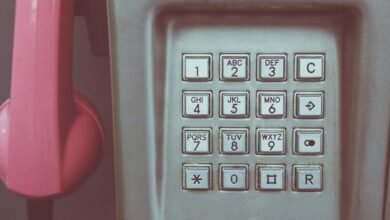Caller Identity Verification 3511996922 3277835344 3297444668 3533388967 3204067775 3896951977

Caller identity verification has become increasingly important due to the rise in phone scams. Numbers like 3511996922, 3277835344, and others represent potential threats. Traditional caller ID has limitations, often failing to authenticate the true identity of the caller. Advanced techniques such as digital signatures and voice recognition present viable solutions. Understanding these methods is crucial. However, the effectiveness of these techniques raises further questions about their implementation and reliability in real-world scenarios.
Understanding Caller ID and Its Limitations
How reliable is Caller ID as a tool for identifying incoming calls?
Caller ID accuracy varies significantly, often affected by spoofing techniques that undermine its effectiveness.
While it serves as a preliminary filter for identifying contacts, privacy concerns emerge as personal information can be misused.
Users seeking to protect their autonomy must recognize the limitations inherent in relying solely on Caller ID for verification.
Effective Methods for Verifying Caller Identity
Numerous effective methods exist for verifying caller identity, each addressing the vulnerabilities associated with traditional Caller ID systems.
Caller authentication technologies, such as digital signatures and two-factor authentication, enhance security. Additionally, voice recognition systems analyze vocal patterns, providing a unique biometric verification method.
Together, these approaches foster a more reliable environment for communication, ensuring that individuals can engage with confidence and freedom from deception.
Recognizing Common Phone Scams
As individuals increasingly rely on their phones for communication, the prevalence of phone scams has surged, necessitating a keen awareness of common tactics employed by fraudsters.
Recognizing scam indicators, such as unsolicited calls requesting personal information, is crucial. Phishing tactics often involve urgency or threats, compelling individuals to act impulsively.
Awareness and education about these strategies can empower users to protect themselves from potential scams.
Best Practices for Protecting Personal Information
While the digital landscape continues to evolve, implementing best practices for protecting personal information remains essential for safeguarding against unauthorized access and potential fraud.
Users should regularly update privacy settings across platforms, limit personal data sharing, and utilize strong, unique passwords.
Additionally, employing two-factor authentication can significantly enhance security, ensuring that individuals retain control over their sensitive information in an increasingly interconnected world.
Conclusion
In the realm of telecommunication, verifying caller identity is paramount, as the adage goes, “An ounce of prevention is worth a pound of cure.” Emphasizing robust methods such as digital signatures and two-factor authentication can significantly mitigate the risks associated with scams. By understanding the limitations of traditional Caller ID and adopting best practices, individuals can safeguard their personal information effectively. As technology evolves, remaining vigilant and informed is essential to navigate an increasingly complex landscape of fraudulent activities.




